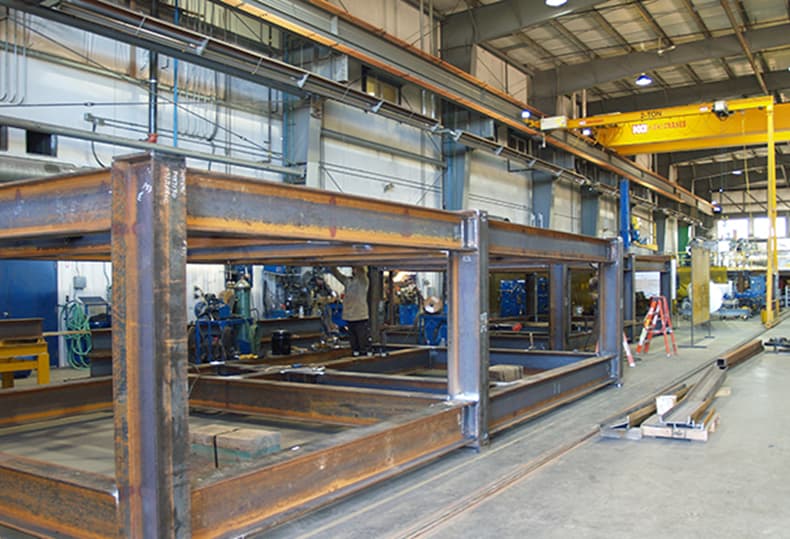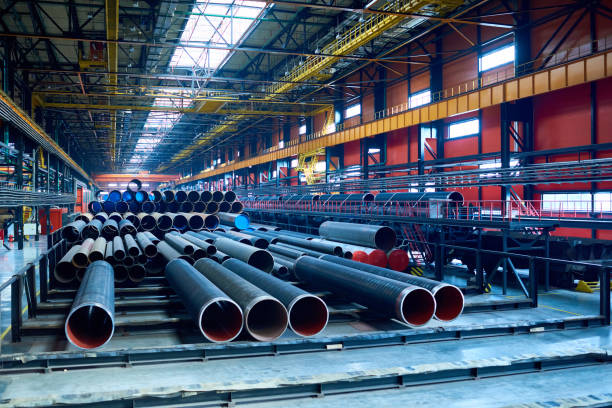Innovative Fads in Steel Fabrication: Enhancing Sturdiness and Precision
In the realm of steel fabrication, the pursuit of longevity and precision has actually resulted in a wave of innovative fads that are improving the market. From innovations in welding modern technologies to the combination of robotic automation in fabrication procedures, the landscape of steel manufacturing is evolving swiftly. High-strength alloy development, coupled with the application of 3D modeling and simulation software application, is pushing the borders of what is achievable in terms of architectural stability and accuracy. The growing emphasis on sustainable practices in steel manufacturing is not only driving efficiency yet additionally fostering an extra eco mindful method to construction. These fads are not just forming today yet additionally laying the groundwork for the future of steel construction, promising additional improvements in sturdiness and precision.
Advanced Welding Technologies
In the realm of steel fabrication, the adoption of sophisticated welding technologies has considerably revolutionized the industry's strategy to attaining exceptional high quality and accuracy in architectural welds. Advanced welding modern technologies, such as laser beam of light welding and friction stir welding, have actually emerged as game-changers in the field. By leveraging these sophisticated welding methods, steel producers can elevate the durability, strength, and precision of their architectural welds, fulfilling the increasingly demanding needs of modern construction projects.
Robot Automation in Fabrication
Embracing robot automation has come to be a keystone of contemporary steel fabrication practices, enhancing processes and enhancing efficiency throughout the sector. Robots are transforming the way steel parts are made, using unparalleled accuracy and rate while reducing human mistake. These automated systems can manage repeated tasks with consistent precision, bring about better output.
One trick benefit of robotic automation in steel fabrication is the capability to work around the clock without exhaustion, substantially increasing manufacturing result. This continual operation lessens downtime and increases job timelines, inevitably saving costs for manufacturers. In addition, robotics can be set to carry out detailed tasks that may be harmful or difficult for human employees, improving security in the office.
Moreover, robotic automation allows smooth integration with other electronic innovations, such as computer-aided layout (CAD) software program and Net of Points (IoT) systems (metal fabrication melbourne). This interconnected strategy enhances interaction in between various phases of construction, maximizing operations and making certain real-time monitoring and control. As the steel fabrication sector remains to advance, robot automation stands out as a transformative force driving efficiency and precision in producing procedures

High-Strength Alloy Advancement
The improvement of high-strength alloy growth in steel fabrication is improving the industry's method to enhancing material resilience and efficiency. High-strength alloys are engineered to display remarkable mechanical residential properties, such as increased tensile toughness, durability, and rust resistance contrasted to standard steel qualities. By integrating these innovative alloys right into manufacture procedures, manufacturers can generate components that stand up to greater anxiety levels and extreme settings, leading to even more long lasting and dependable end items.
One secret advantage of high-strength alloy advancement is the ability to minimize material density without endangering structural integrity. This not only results in lighter-weight parts yet also adds to cost savings and boosted performance in manufacture and assembly procedures. The boosted strength-to-weight proportion of these alloys enables for the layout and building and construction of structures with greater load-bearing capabilities while lessening total weight.
3D Modeling and Simulation Software Program
Improvements in steel construction procedures have actually been substantially thrust by the integration of innovative click now 3D modeling and simulation software tools. These tools enable producers to produce comprehensive virtual models of their projects, allowing them to picture the end product with precision before any manual labor starts. By simulating numerous anxiety variables, ecological conditions, and structural tons, producers can maximize layouts for enhanced longevity and efficiency. Additionally, 3D modeling and simulation software application streamline the manufacturing process by recognizing potential issues at an early stage, decreasing the demand for costly rework and reducing material waste.

Lasting Practices in Steel Manufacturing
Including lasting practices right into steel production processes is essential for minimizing ecological influence and ensuring long-term resource availability. One key sustainable method is the adoption of energy-efficient modern technologies to decrease greenhouse gas exhausts throughout the steel production procedure. This consists of making use of eco-friendly power hop over to these guys sources, such as solar or wind power, to power steel plants and applying energy-efficient tools to enhance power usage.
An additional crucial facet of sustainable steel manufacturing is the responsible sourcing of raw materials. This involves making certain that the iron ore and other sources utilized in steelmaking are gotten from ecologically pleasant and honest resources. By advertising openness in the supply chain and sticking to rigorous ecological requirements, steel manufacturers can reduce the negative effects of source removal on local ecological communities and communities.

Conclusion
To conclude, the innovative patterns in steel construction such as sophisticated welding innovations, robotic automation, high-strength alloy growth, 3D modeling and simulation software application, and lasting methods are improving the resilience and precision of steel items. These improvements are transforming the steel manufacture industry by boosting sustainability, performance, and high quality. It is clear that the future of steel fabrication exists in welcoming these sophisticated innovations to meet the needs of modern-day building and manufacturing industries.
In the realm of steel construction, the search of toughness and precision has led to a wave of ingenious trends that are reshaping the market.In the world of steel manufacture, the fostering of advanced welding modern technologies has dramatically transformed the market's method to attaining premium quality and accuracy in structural welds. As the steel manufacture industry continues to develop, robot automation stands out as a transformative pressure driving effectiveness and accuracy in making procedures.
Furthermore, reusing and reusing steel scrap and waste materials play a substantial function in enhancing the sustainability of steel manufacturing. Alpha reo.In final thought, the cutting-edge fads in steel construction such as innovative welding modern technologies, robotic automation, high-strength alloy growth, 3D modeling and simulation software, and sustainable practices are boosting the toughness and precision of steel products